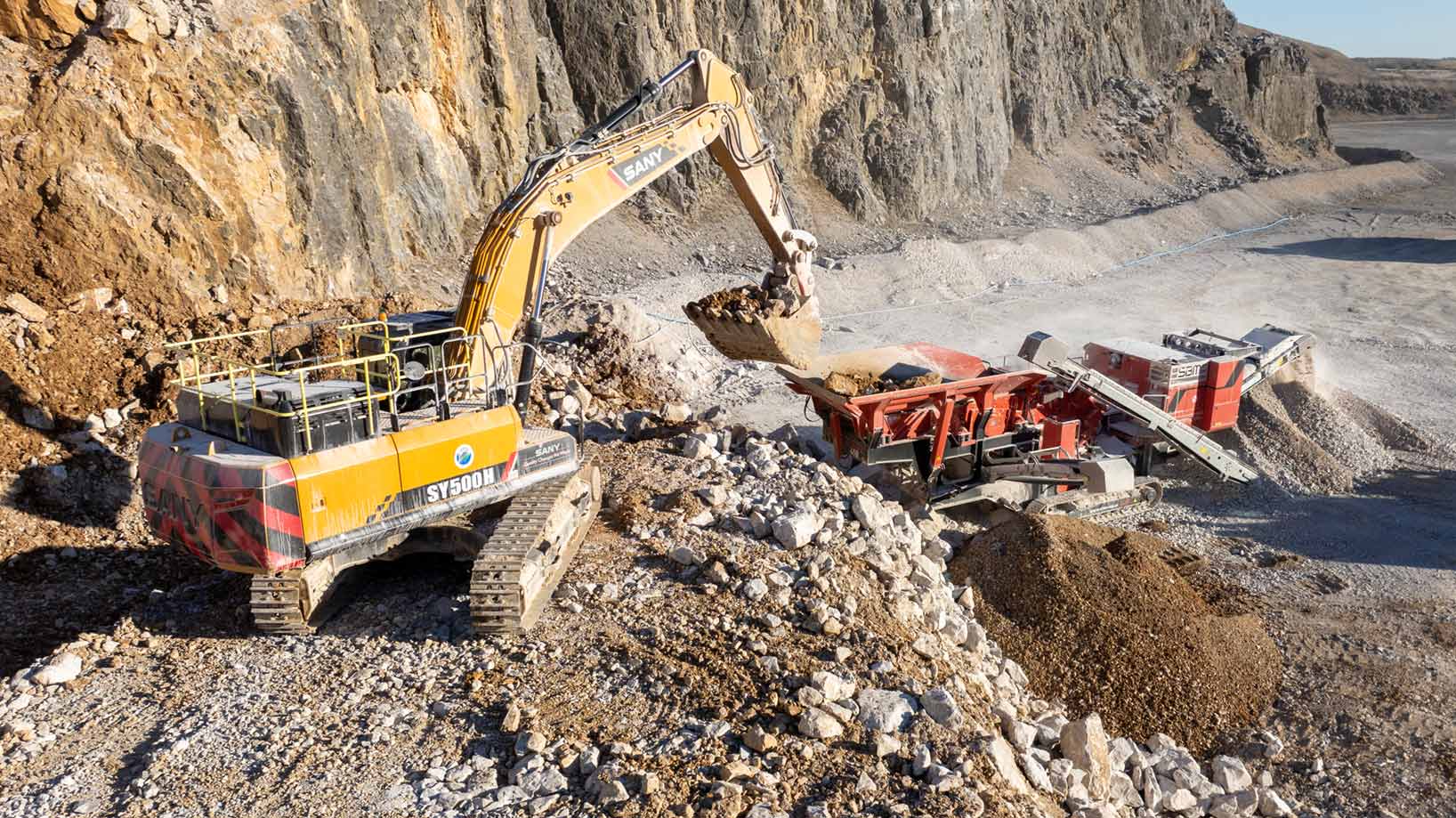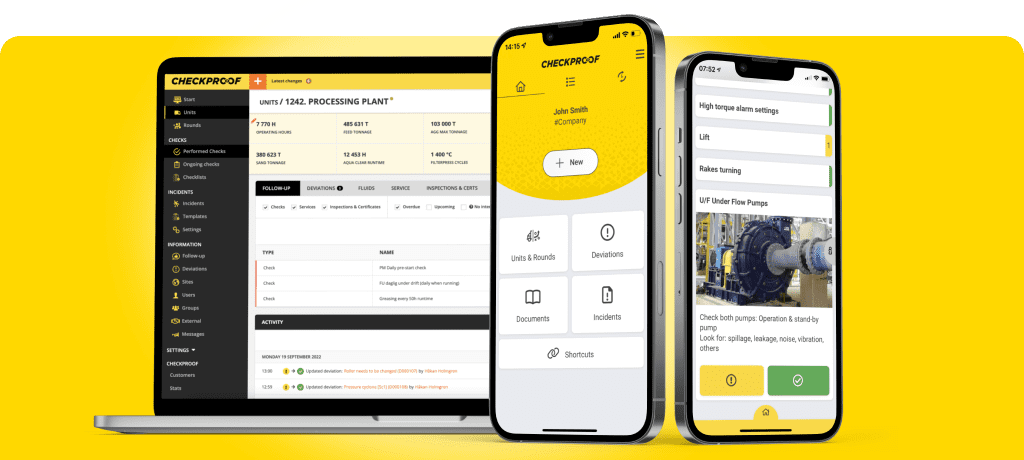Meet us at Bauma, Munich, DE - Trade Fair Center Messe Munchen: 7-13 April
Preventative maintenance is all about identifying and avoiding defects and deviations before they cause problems and expensive breakdowns. Routines are critical to safe maintenance work. But how can you ensure your operators know the maintenance for every piece of machinery AND that they carried out the checks? With RFID tags, you gain oversight and control and minimize the risk of missing something important during your inspection rounds.
Clear routines are critical to safe and effective maintenance work. But how can you ensure that your employees know the correct maintenance routine for every vehicle or piece of machinery? And how do you ensure they have carried out a particular check? RFID technology can help safeguard the integrity of the routines you have in place.
In this article we’ll cover:
- What is RFID Technology
- How can you apply RFID Technology to your Maintenance work
- What are the 4 advantages of RFID Technology?
- Maximized Availability
- Improved Safety
- Saved Time
- Enhanced Traceability
- Integrating RFID Technology into your digital Maintenance system
What is RFID Technology?
RFID is short for Radio Frequency Identification. It’s a technology that allows you to digitally store information in so-called RFID tags that you read with an RFID scanner. A tag comes in many different shapes and sizes and can be attached to practically any surface. It works just like a barcode but with the benefit of not having to use an optical scanner to read its contents. RFID tags are used in many industries to improve traceability, quality checks, and inventories.
How can you apply RFID Technology to your Maintenance work
By connecting RFID technology to your digital system, you don’t just ensure that each employee understands ALL the parts of that routine, but also that the right person carries it out. When you attach RFID tags to the units that need to be checked and connect each tag to a certain checkpoint in your maintenance routine, a task cannot be marked as completed unless the person responsible physically scans the RFID tag with their phone.
With RFID tags, you can:
- Make it easier for employees to quickly collect relevant information for each unit
- Ensure the right person has performed the maintenance check AND correctly
- Log specific details about previous actions and follow up on them
And did you know that you already carry an RFID reader in your pocket? Most modern mobile devices support Near Field Communication, or ‘NFC’, which means that you can use a regular phone to scan an RFID tag and read the information stored inside. The only prerequisite is that the user must have access to the database where the data is extracted from.
What are the 4 advantages of RFID Technology?
1. Maximized Availability
RFID technology can play a crucial role in maximizing equipment availability. As you’re likely aware, when preventative maintenance is done the wrong way, the risk of unplanned and costly breakdowns increases significantly. To maximize your facility’s availability, it’s important to ensure that routines are being followed. By connecting checkpoints in your preventative maintenance routines to RFID tags, you can guarantee that employees conduct checks properly. This proactive approach allows for timely intervention and prevents unexpected breakdowns that could disrupt operations. With RFID, businesses can ensure that their assets are consistently available, contributing to increased productivity and efficiency. Using the technology simply eliminates the risk of carelessness, negligence, or mistakes caused by human error.
2. Improved Safety
Coupling RFID with your maintenance routines enhances safety protocols and helps prevent accidents. By accurately tracking equipment maintenance history and performance data, maintenance personnel can identify potential safety hazards before they escalate. RFID-enabled systems ensure that equipment is in optimal condition and compliant with safety standards. It also guarantees that an operator has conducted the check. This minimizes the risk of accidents and injuries in the workplace, fostering a safer environment for employees and ensuring the site is HSE compliant.
3. Saved Time
If your business has a mobile fleet with many similar machines, you know how time-consuming it can be to match the right object with the right information in your digital maintenance system. You may have to manually search for a serial number or scroll through many different options before you find the information you’re looking for. RFID streamlines maintenance processes, resulting in significant time savings for maintenance teams. It becomes significantly easier if the object or unit you are to check has an RFID tag connected to your maintenance system. In that case, you only need to scan the tag with your phone to access the correct information. While on-site, you can also easily find, conduct, and complete checks for the corresponding object or unit without wasting time searching the system. Maintenance tasks such as asset identification, inspection, and documentation can be automated and executed swiftly. The time saved through RFID implementation translates into increased operational uptime and cost savings for the organization.
4. Enhanced Traceability
Have you ever been in a discussion with a customer or colleague regarding who caused damage to a vehicle or piece of machinery? RFID facilitates enhanced traceability throughout the maintenance lifecycle. Each asset equipped with RFID tags contains a unique identifier, allowing maintenance teams to track its movement and maintenance history effortlessly. This level of traceability ensures that assets undergo scheduled maintenance at the appropriate intervals and that you can easily go back through maintenance records. When you connect preventative maintenance to RFID tags, each action taken can be marked with time and date, location, and operator. You can also set photo-based documentation as a mandatory stage of your routines. That way, you can retroactively double-check who has been where and when, as well as the condition of the object in question.
Integrating RFID Technology into your digital Maintenance system
Did you know that you can add RFID as an integral part of CheckProof’s digital system for maintenance routines, checklists, and reports? As a user with admin access, you can easily pick and choose what units or parts of a check you want to connect to RFID tags as well as add tailor-made checkpoints for each tag. The frontline employee who performs the check can subsequently scan the tag through the CheckProof app on their mobile device to prove that they completed the check.
If you work in a business dependent on heavy machinery or vehicles, you know how crucial maintenance routines are, as it prevents both workplace accidents and unnecessary downtime. Maybe you’re already using a digital solution to ensure all employees have access to the same routines. Applying RFID technology to your maintenance work takes your routines one step further, allowing you to stay ahead of your game and sleeping soundly at night, safe in the knowledge that the routines that you have set out are being followed.
Want to know what CheckProof can do for you?
CheckProof's easy-to-use app makes it easier to do the right thing at the right time. Discover how you can run world-class maintenance that is both cost-effective and sustainable.












